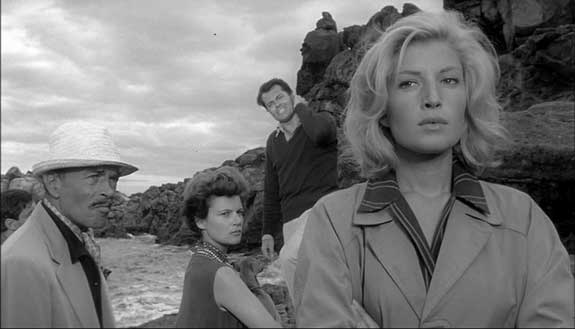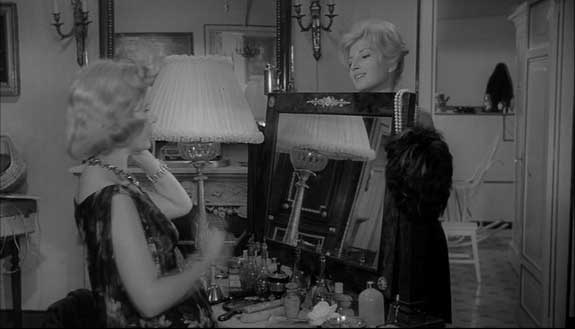F 2 F

As the emotional center of L’Avventura, Claudia is never placed in merely shot-reverse-shot situations. Instead, the back of her head is used as screen for both the emotional projections of the other characters as well as the audience. For example, in the above still, we measure the distance between what we see and what her companions imagine she is concealing (since her face is only available to the audience). At the same time, we scrutinize their emotions: what do they feel in the face of the emotions of another (even when that other is not looking) and to what extent are they stuck in the primacy (or selfishness) of their own emotions? To what extent are their emotions dependent upon the decipherment of the emotions of another? In certain moments, Patricia (second from left) will actually put on a face for Claudia; Patricia will turn towards the rest of the party bravely, a cool stand-in for Claudia who turns away, sobbing.
This type of shooting emphasizes the resonances and discordances between social actors. When Vitti does turn towards the camera (which may be towards or away from the other characters, depending on the situation), she tends to perform it as female stars of a certain era were want to do: by using hair as curtain. Turning to face the camera becomes a moment of theatrical revelation.
However, since this is a brand of neorealism, theater is put under scrutiny. It’s this very revelation of unique presence that threatens either to be engulfed by inexorable absences or by the specter of interchangeability. Feminine interchangeability haunts the film--Patricia standing in for Claudia standing in for Anna. We witness the ease with which Anna’s fiance can easily replace his affections for the dead Anna with her girlfriend Claudia, and these affections are, in turn, easily substituted for a prostitute’s. In a scene in which Patricia and Claudia try on wigs, we see how feminine artifice, as a form of camaraderie, encourages this interchangeability.
